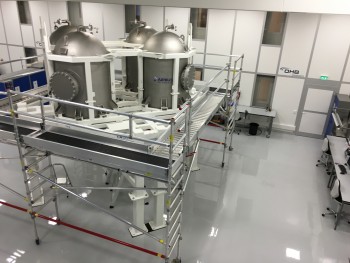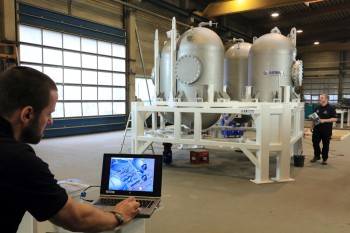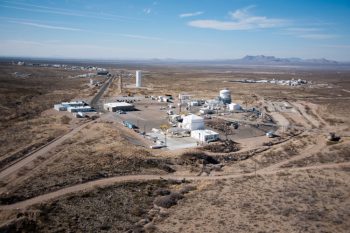Engineers are preparing for tests to qualify the propulsion subsystem, including the main engine, for Orion’s European-built service module that will propel the spacecraft during its flight in deep space.
They will test engineering units, fully representative of the engines that will equip the spacecraft that will fly with NASA’s Space Launch System rocket in late 2018.
The tests of the propulsion qualification model including tests of the engines, propellant feed systems, and propulsion control avionics. The tests will start at NASA’s White Sands Test Facility in New Mexico, USA, in spring 2017.
Orion’s service module main engine is a modified Orbital Manoeuvring System engine used before on the Space Shuttle that is being repurposed for use in the European service module.
The propulsion qualification model that will be used for testing will be shipped from Sweden to White Sands November 2016. It consists of two helium tanks (to pressurise the propellant tanks), propellant tanks, thrusters, piping, electronics, pressure control assemblies, a pressure regulation unit and propellant isolation equipment (valves).

Propulsion Qualification Model (PQM), including the structure and the propellant tanks, ready for the start of integration activities at OHB Sweden.
Data from the testing at White Sands will verify the proper operation of the service module propulsion subsystem.
While the main engine and test facilities for the Propulsion Qualification Model are prepared for firing up, the main engine has been refurbished and tested at White Sands, and was shipped to NASA’s Johnson Space Center in Houston for vibration testing. The vibration testing is helping to ensure the engine can withstand the loads induced by the rocket during launch. After testing at the Johnson Space Center, the flight engine will be sent to Europe so ESA can integrate it into the Orion service module before delivery to NASA.
The video below shows testing of the 220 N engines built by Airbus used for attitude control:



 Automated Transfer Vehicle page
Automated Transfer Vehicle page ATV blog archive
ATV blog archive
Discussion: no comments